Proudly situated in the heart of Hanoi, Vietnam’s vibrant capital city, the Vietnam Museum of Revolution stands as a beacon of remembrance, inviting visitors to delve into the nation’s revolutionary history. It is conveniently located on Tong Dan Street – Hoan Kiem District, center of Hanoi Old Quarter.
Where is Vietnam Museum of Revolution?
The Vietnam Museum of Revolution is located in the Hoan Kiem district of Hanoi, the capital city of Vietnam. More specifically, it is situated at 25 Tong Dan Street, within walking distance of many other famous attractions and historic sites in Hanoi.
Some key facts about the museum’s location:
- It is located right in the heart of Hanoi, making it very accessible for visitors staying in the city center. The Old Quarter and Hoan Kiem Lake are just 1km away.
- It is located 4.3km from Ba Dinh Square, where Ho Chi Minh read Vietnam’s Declaration of Independence in 1945.
- The museum is just opposite the historic French-built Hanoi Opera House, one of the city’s most iconic landmarks.
- It is about 3km from Hanoi Train Station and just over 30km from Noi Bai International Airport.
The Vietnam Museum of Revolution enjoys a prime location right in the heart of bustling central Hanoi, surrounded by many significant historical and cultural sites. This makes it very convenient to access for those exploring the city.
Introducing Vietnam Museum of Revolution
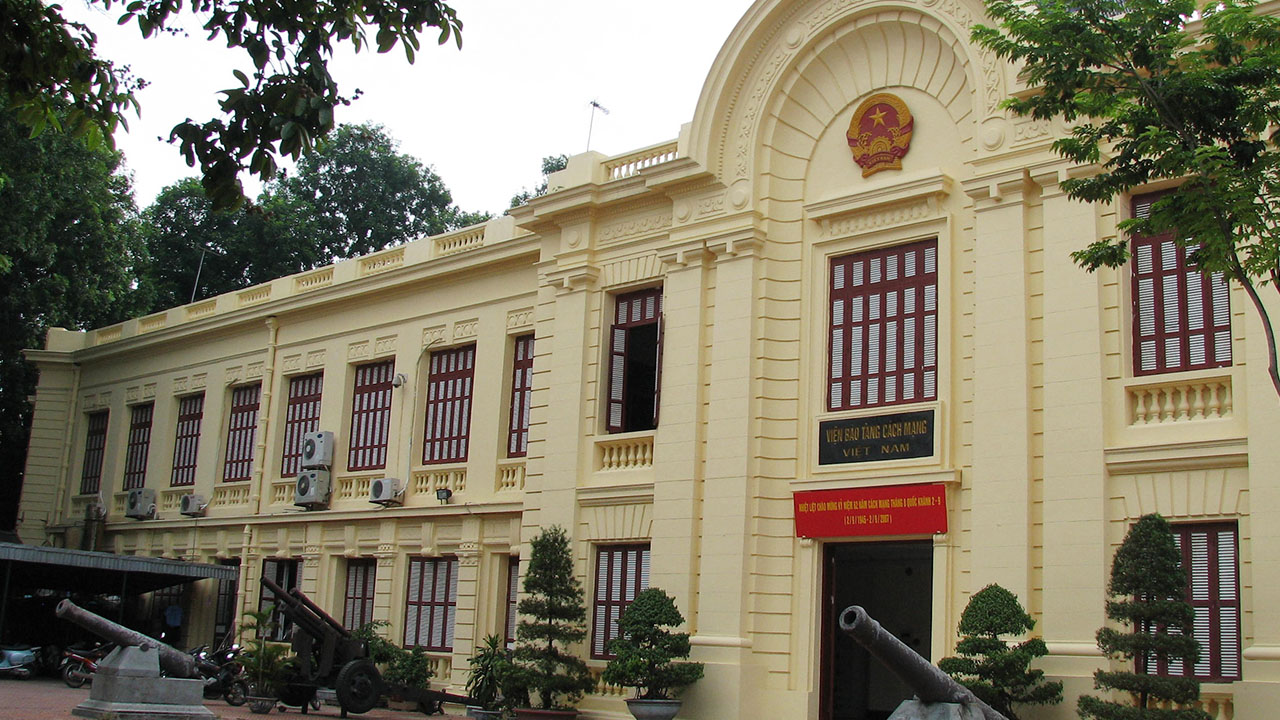
The Museum of Vietnamese Revolution, founded in 1959, chronicles the country’s fight for independence and the history of the Communist Party. Through a diverse collection of artifacts, the museum offers a unique glimpse into Vietnam’s journey from 1858 to the present.
A visit to the Hanoi Museum of Vietnamese Revolution is an opportunity to delve into the societal changes that have shaped the nation, from the bustling streets to the corridors of power. The exhibits provide valuable insights into the rich culture of Vietnam.
Among the treasures housed in the Museum of Vietnamese Revolution are a jar from the 1920s that once held revolutionary documents, a Japanese Buddhist drum used during rallies, and Vietnam’s first sewing machine. The displays also feature numerous photographs and documents capturing pivotal moments in the country’s quest for independence.
The Museum of Vietnamese Revolution in Hanoi covers three main themes: the National Liberation Movement against French rule before the establishment of the Communist Party (1858-1930), the struggle for independence under the Communist Party (1858-1975), and the construction of the Socialist regime (1976-1994). These topics are brought to life through engaging exhibits and informative displays.
Opening Hours and Entrance Fees to Vietnam Museum of Revolution
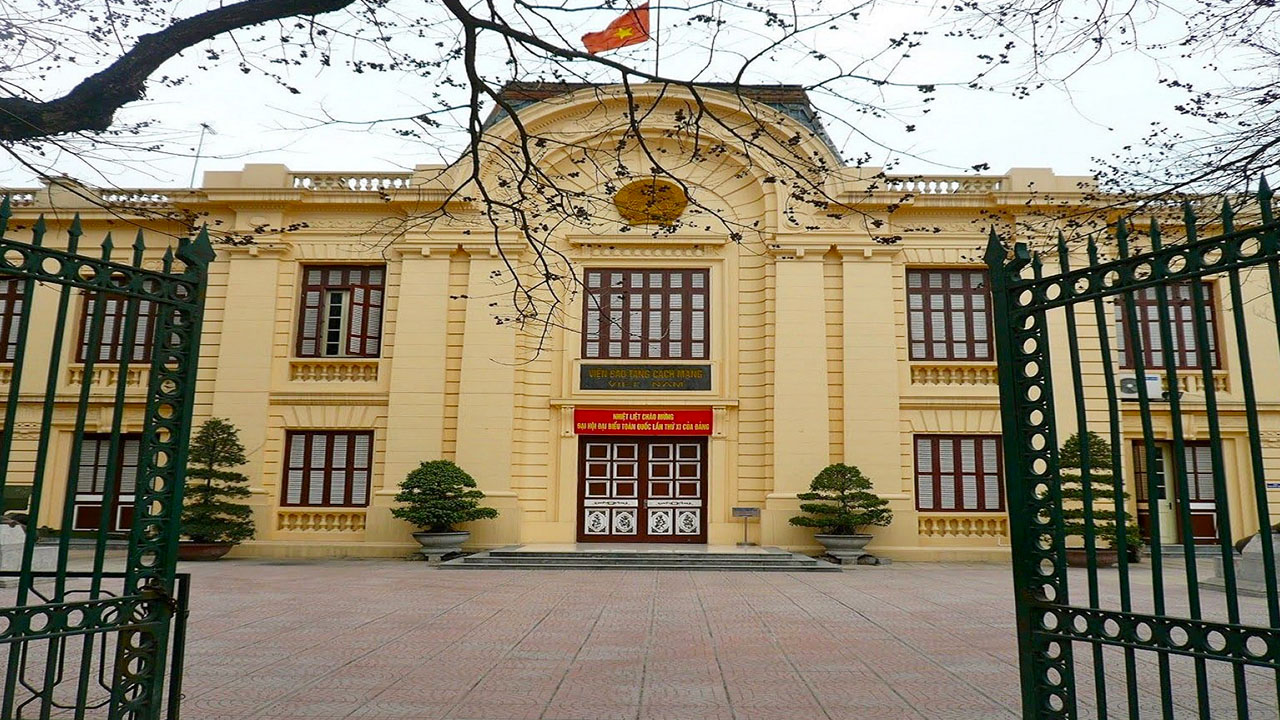
The Vietnam Museum of Revolution is situated at 25 Tong Dan Street, Trang Tien Ward, Hoan Kiem District, Hanoi. It can be easily reached through various modes of transportation.
By private vehicle, visitors can follow Hang Thung Street and turn right onto Tran Quang Dieu Street. From there, continue until reaching the intersection and then turn right onto Trang Tien Street to reach the museum.
For those who prefer public transportation, there are several bus routes that pass by the museum, such as numbers 01, 04, 09, and CNG03. These buses stop at Tran Khanh Du Street, Trang Tien Street, or Tran Hung Dao Street, providing convenient access to the museum.
The Vietnam Museum of Revolution is open throughout the week, except on Mondays. The opening hours are from 8:00 AM to 12:00 PM in the morning and from 1:30 PM to 5:00 PM in the afternoon. Visitors can plan their visit accordingly.
As for the entrance fees, they are as follows: 40,000 VND per person for adults, 20,000 VND per person for students, 10,000 VND per person for schoolchildren, and free of charge for children under 6 years old and individuals with severe disabilities.
Exploring Vietnam Museum of Revolution
The museum’s extensive collection is laid out in chronological order, allowing visitors to journey through the key phases of Vietnam’s revolutionary history. Here is an overview of the main sections and exhibits:
The French Colonial Period
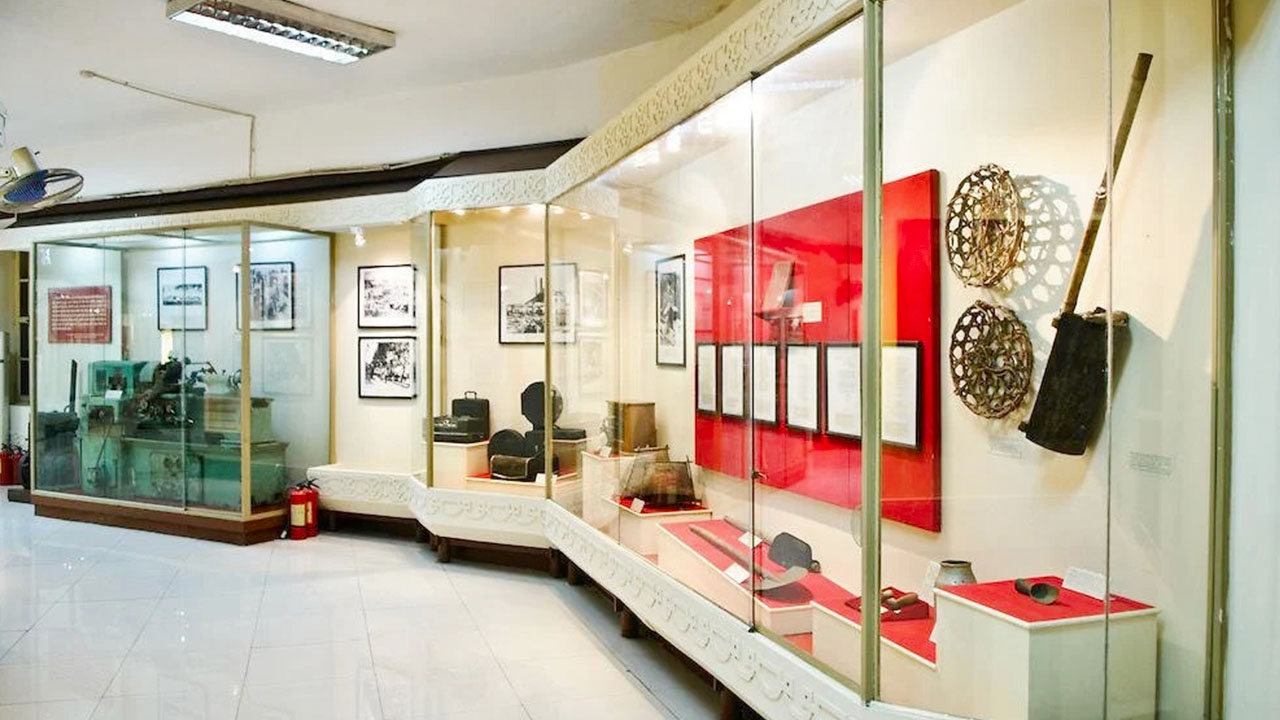
This section documents the tumultuous decades of French colonial rule from the late 19th century up to the World War II period. Highlights include:
- An introduction to early resistance campaigns against French colonial power.
- Profiles of activists like Phan Boi Chau who spearheaded early independence movements.
- An examination of the devastating Great Famine of 1945.
- Photographs, documents and propaganda related to the French colonial administration.
The August Revolution
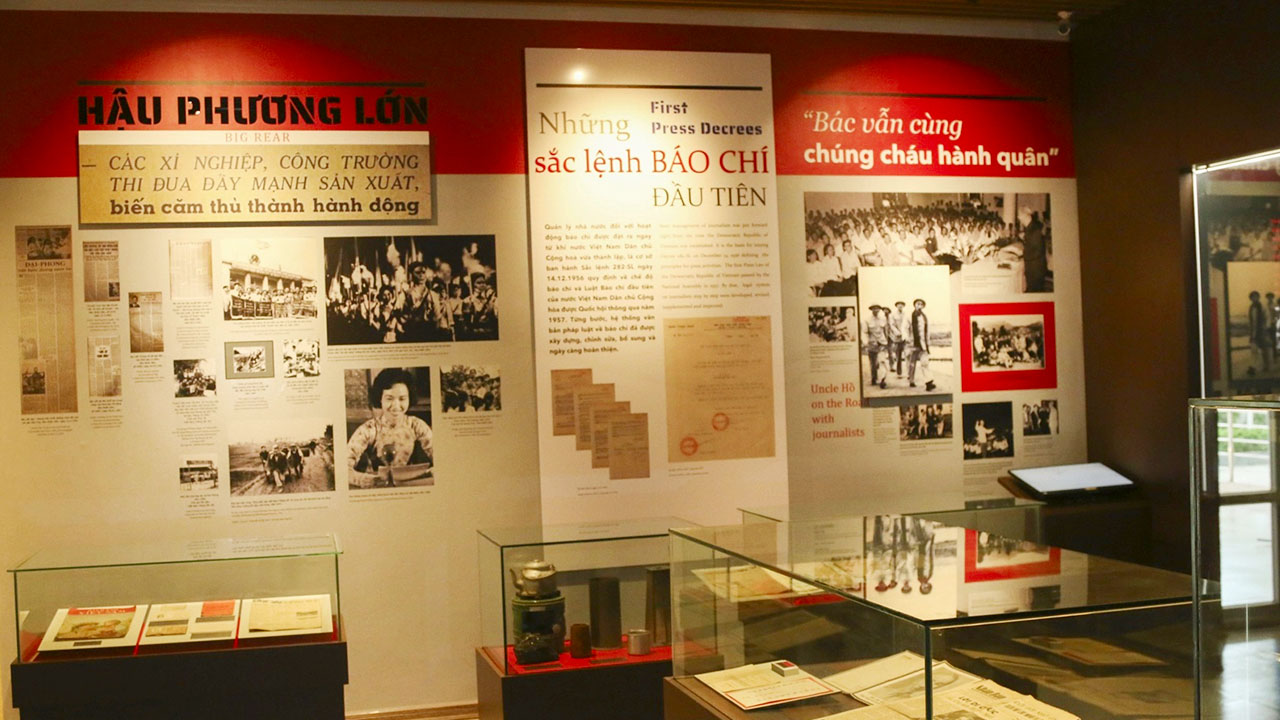
This section captures the nation-wide August Revolution of 1945 that expelled the French administration and saw Ho Chi Minh declare independence for the Democratic Republic of Vietnam. Exhibits include:
- Portraits and biographies of the key revolutionaries involved.
- Weapons used by revolutionary forces during this period.
- Ho Chi Minh’s handwritten independence declaration.
- Photographs of mass rallies in Hanoi during the revolution.
The First Indochina War

The story continues with in-depth coverage of the 1946-1954 war between French colonial forces and the Viet Minh independence movement. Highlights include:
- An large collection of weapons and uniforms from both sides.
- Maps of key battle sites like Dien Bien Phu.
- Photographs of Vietnamese resistance fighters.
- Propaganda materials from the war period.
Division and Conflict
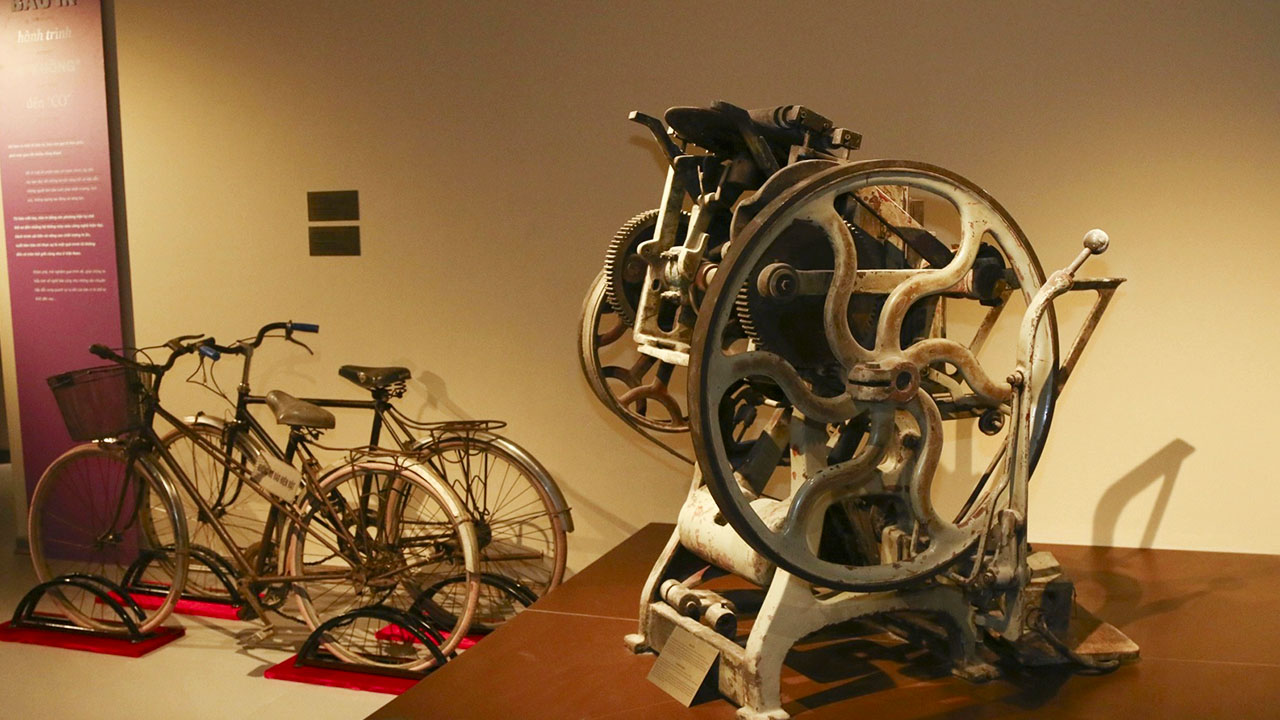
This section documents the period after the 1954 Geneva Accords which saw Vietnam temporarily divided, leading to further conflict. Exhibits include:
- Details on the formation of the National Liberation Front.
- An examination of the growing conflict with US-backed forces.
- Perspectives from both North and South Vietnam.
- Artifacts from famous battles of the Vietnam War.
Reunification
The final section celebrates Vietnam’s reunification in 1975, after decades of struggle. This section includes:
- Memorabilia from the Fall of Saigon in 1975.
- Photographs of celebrations in the streets marking reunification.
- A collection of posters and propaganda from this optimistic period.
- Profiles of key figures like General Vo Nguyen Giap.
As can be seen, the museum offers a deep, extensive look into Vietnam’s journey to independence and reunification. The chronological layout makes it easy for visitors to grasp the historical narrative.
Eating Places near Vietnam Museum of Revolution
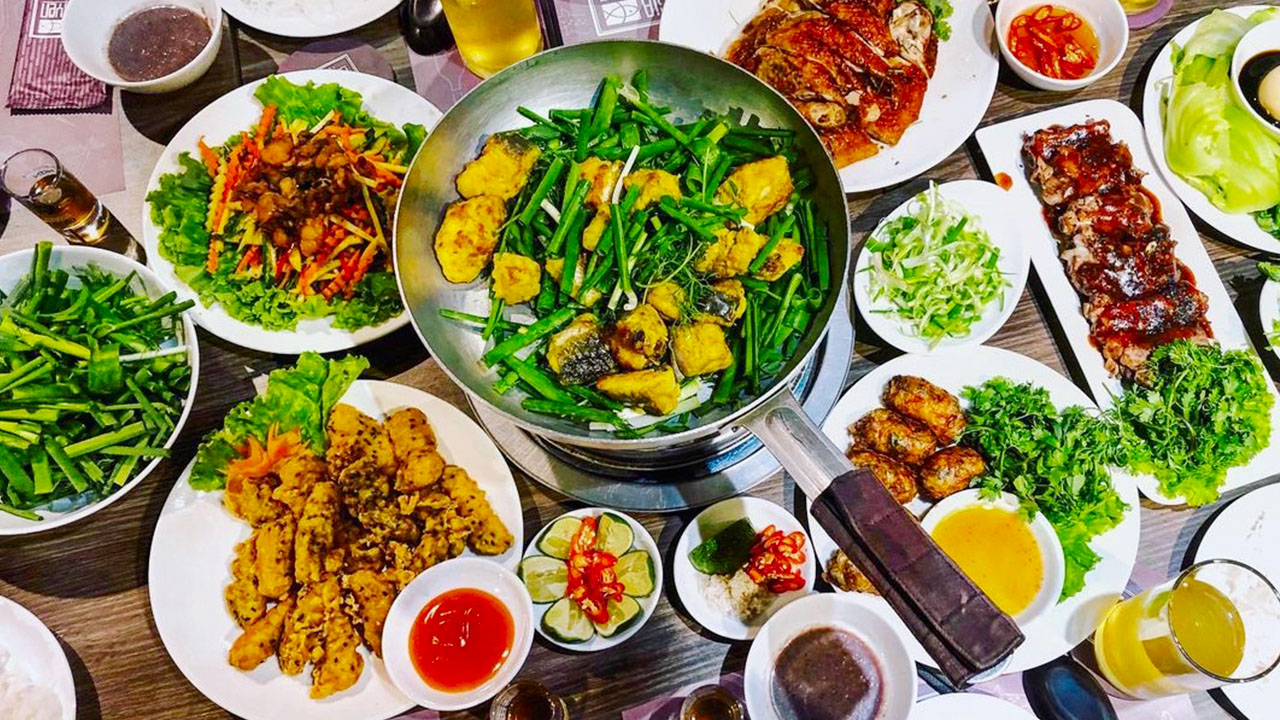
To fuel up before or after your visit to the Vietnam Museum of Revolution, check out these delicious dining options located just a short walk from the museum:
Cha Ca La Vong: This family-run restaurant serves up cha ca la vong – a Hanoi specialty of turmeric fried fish with dill. Enjoy the sizzling fish hotpot with rice noodles, crunchy peanuts, and herbs. The restaurant has a casual, local ambience.
Bun Cha Dac Kim: Sample bun cha – charcoal grilled pork with vermicelli noodles and dipping sauce. Also try nem chua – fermented pork sausage. Affordable prices and quick service. Very popular with locals.
Quan An Ngon: This French villa restaurant offers a huge variety of Vietnamese street food. Excellent mixed meat grill plates. You can also create your own noodle soup bowls. Classy setting with outdoor garden seating available.
Highlands Coffee: One of Vietnam’s most popular coffee chains, serving both hot and cold coffee drinks. Also offers tasty all-day breakfasts, light meals, and pastries. The coffee has robust Vietnamese-style flavors.
So whether you crave traditional street-style dishes or a more cosmopolitan cafe vibe, there are delicious dining choices near the museum to match every taste and budget.
Attractions near Vietnam Museum of Revolution
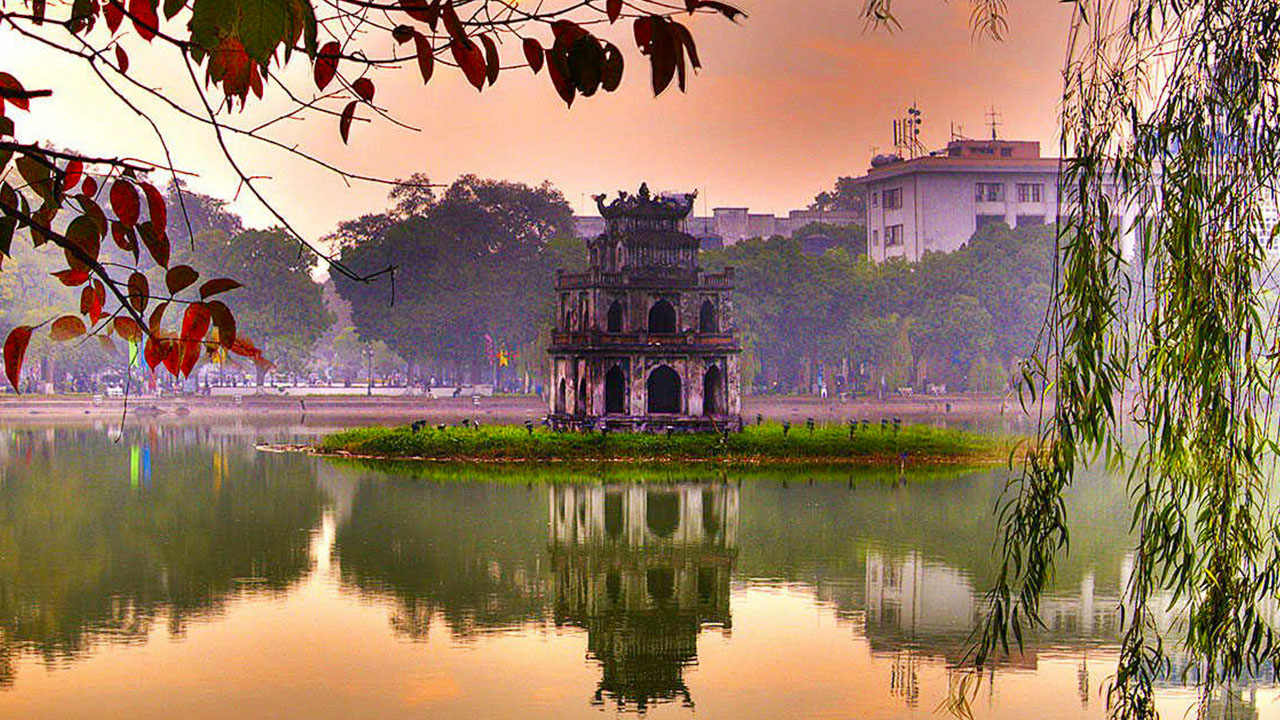
The area surrounding the Vietnam Museum of Revolution overflows with fascinating historical and cultural attractions. Here are some must-visit sites and landmarks within walking distance or a short taxi ride from the museum:
Hanoi Opera House: This striking French-built opera house dates back to 1911 and hosts ballet, music, and theater performances. The elegant building combines Gothic and Asian architectural flourishes. English-language tours provide insights into the opera house history.
St Joseph’s Cathedral: One of Hanoi’s most iconic landmarks, built in 1886 in striking neo-Gothic style. Still an active Catholic church holding regular mass services. Visitors are welcome to step inside and admire the intricate frescoes and stained glass.
Hanoi Old Quarter: The bustling heart of Hanoi, this district features narrow streets lined with shophouses selling everything from street food to souvenirs. Soak up the lively atmosphere as you explore the Old Quarter’s temples, markets, and cafes.
Hoan Kiem Lake: Hanoi’s picturesque central lake contains Ngoc Son Temple on an island linked by the iconic red Huc Bridge. Early mornings see locals practicing tai chi on
Hoa Lo Prison: This historic prison was built by French colonists in the late 19th century to incarcerate Vietnamese activists. It earned the nickname “Hanoi Hilton” among American POWs held here during the Vietnam War. Today it is a museum providing insights into Vietnam’s colonial history and the war with the US.
Vietnam National Museum of History: Situated right next to the Vietnam Museum of Revolution, this must-visit museum provides an overview of Vietnam’s full history. It houses over 200,000 artifacts from prehistoric times through to the August Revolution. Excellent exhibits profiling Vietnam’s ethnic minority cultures.
Imperial Citadel of Thang Long: This 11th century imperial citadel offers a glimpse into Hanoi’s past as a seat of power for ancient Vietnamese dynasties. Explore the towering stone ramparts and visit the picturesque Đoan Môn gate.
The Vietnam Museum of Revolution is surrounded by no shortage of historic temples, lively markets, scenic lakes, and French colonial landmarks. Allow plenty of time to explore this fascinating neighborhood.
Conclusion
The Vietnam Museum of Revolution provides foreign visitors and Vietnamese citizens alike an essential window into the nation’s tumultuous revolutionary history. From the earliest anti-colonial movements through to the American war period and eventual reunification, the museum chronicles this gripping historical narrative through its extensive collection of artifacts, photographs, and multimedia exhibits.
Given its prime location in central Hanoi, just steps away from attractions like the Hanoi Opera House and the bustling Old Quarter, the museum should be considered an unmissable destination for all visitors. After exploring the exhibits, don’t forget to refuel at one of the many delicious restaurants located nearby. Understanding Vietnam’s revolutionary history allows you to better appreciate the resilience and spirit of this dynamic nation.

